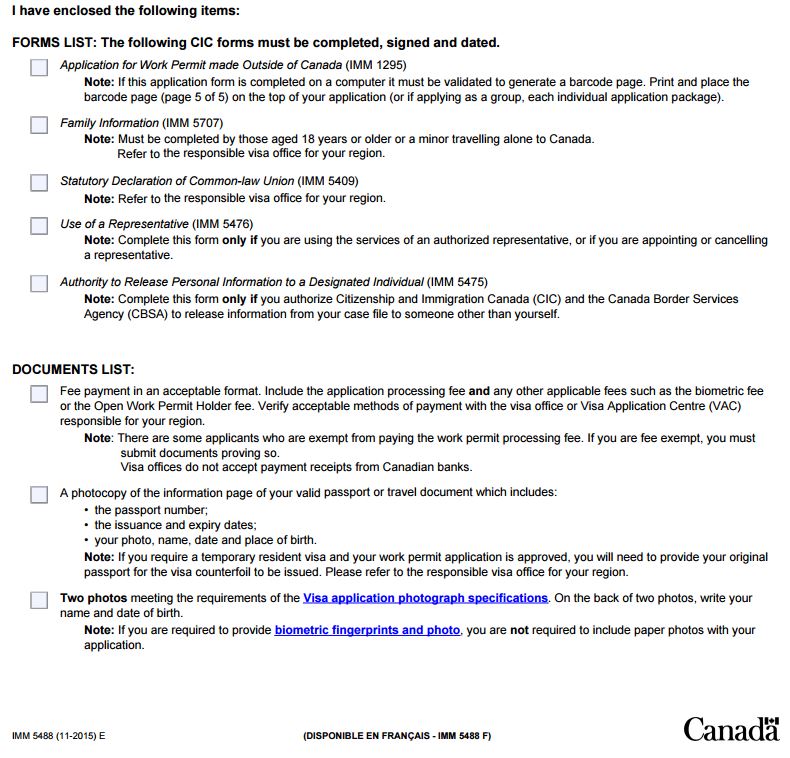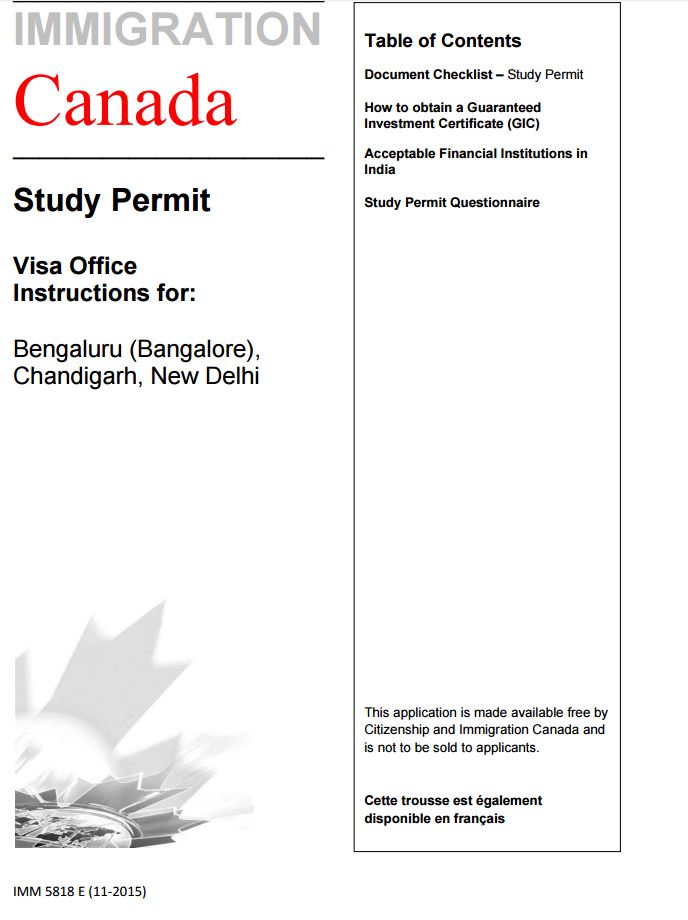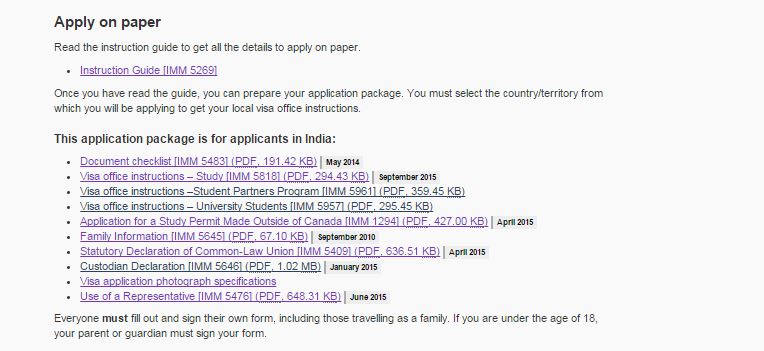CIW Post #1: “National Occupation Classification Code – Challenges and Opportunities”
The National Occupational Classification code, more commonly referred to as the “NOC code” is under a whole lot of scrutiny these days.
In fact, one of the more aggressive recommendations of the Canadian Chamber of Commerce’s Report “Immigration for a Competitive Canada: Why High Skilled International Talent Is at Risk” is for Canada to consider abandoning NOC code classifications altogether. The report writes:
“Remove the NOC code requirement wherever feasible in order to recognize the changing nature of occupations and to avoid confusion and unnecessary and costly errors by government officials”
Let’s take this post to look at the NOC, the spin-off issue of Employment Reference Letters/Offers of Employment, and see how it all plays in together.
What is the NOC Code?
Citizenship and Immigration Canada (“CIC”) explains it best on their website, so I will quote their explanation below:
The NOC is a system used by the Government of Canada to classify jobs (occupations). Jobs are grouped based on the type of work a person does and the types of job duties.
Many of Canada’s immigration programs use it to decide if a job, or type of work experience, is valid for that program’s criteria. For instance, if a person wants to apply as a skilled worker they should check the NOC to see which jobs are considered “skilled” (NOC Skill Type 0 or Skill Level A or B). Find your job title, code and skill level or type.
The job information is broken down into a number of groups. For immigration purposes, the main groups are:
-
Skill Type 0 (zero) – management jobs.
- examples: restaurant managers, mine managers, shore captains (fishing)
-
Skill Level A — professional jobs. People usually need a degree from a university for these jobs.
- examples: doctors, dentists, architects
-
Skill Level B — technical jobs and skilled trades. People usually need a college diploma or to train as an apprentice to do these jobs.
- examples: chefs, electricians, plumbers
-
Skill Level C — intermediate jobs. These jobs usually need high school and/or job-specific training.
- examples: long-haul truck drivers, butchers, food and beverage servers
-
Skill Level D — labour jobs. On-the-job training is usually given.
-
examples: cleaning staff, oil field workers, fruit pickers
-
The end-game importance of the NOC Code is it currently stands as the gatekeeper for applicants that are able to qualify for economic immigration to Canada through Express Entry. Both federally and provincially, there very limited economic immigration options for low-skilled workers. In the temporary foreign worker context, NOC Codes help facilitate whether an applicant is able to get a work permit for their desired position.
What are the practical challenges of NOC?
There are several challenges with the NOC code.
First, it can be often difficult to figure out what one’s position is considered under the NOC and to figure out the right code. The NOC is segmented into distinct industries, many of which have since transformed or have taken on a cross-sector hybrid nature particularly in the last few years. The most up-to-date NOC code is dated 2011.
Furthermore, several jobs are what I consider “tweeners.” For example, NOC creates separate categories for Administrative Assistants (NOC 1241), Legal Assistants (NOC 1242), and Receptionists (NOC 1414). As the correct NOC is not assigned by title, but by the duties performed, it is easy to see substantial overlap particularly in smaller businesses where individuals play several roles. As mentioned earlier, this is important as both Administrative Assistants and Legal Assistant qualify as skilled workers for Express Entry whereas Receptionists do not.
Second, once the correct code is chosen, wage/salary becomes an important issue. This can poke its head in several places. When hiring a temporary foreign worker (“TFW”) through the Labour Market Impact Assessment (“LMIA”) process, the wage offered to the TFW must be above prevailing wage and will be looked very carefully by Service Canada/Employment and Skills Development Canada (“ESDC”) when deciding whether or not to grant the LMIA. Employers are also held to ensuring they remunerate the employee/contractor substantially the same (“STS”) as a Canadian worker duration the duration of the LMIA opinion validity. The NOC code and the wages an individual working under the NOC code in a particular region should earn is also therefore also a system constraint.
Particularly where several applicants for permanent residency under the Express Entry program now need an LMIA to increase their Comprehensive Ranking Score (“CRS”) for selection, wage becomes a very important issue.
Under the International Mobility Program (“IMP”), while several of the LMIA exemptions do not specify the need to offer a certain wage, it is certainly a factor taken into account when assessing the genuineness of the job offer. Prevailing wage does play an important role in specialized knowledge for foreign nationals applying for a work permit as a Specialized Knowledge Intra-Company Transferee.
The Federal Skilled Worker (“FSW”) Program, as set out in the Immigration and Refugee Protection Regulations (“IRPR”) makes wages one of the determinative factors in proving the skilled nature of one’s qualifying work.
The Federal Court in Qin v. Canada (Citizenship and Immigration) 2013 FC 147 have said it is entirely reasonable for an Officer to consider wage as a factor for a Canadian Experience Class (“CEC”) applicant even where it is not a factor listed in IRPR.
As of the date of this piece, and utilizing the above examples, the prevailing wage for a receptionist in the Lower Mainland is $15.87/hr, for an secretary (i.e admin assistant), it is $21.73/hr, and for a legal assistant it is $27.47/hr. You can see where wage discrepancy can create issues.
Third, the ultimate confusion between NOC 2006 and NOC 2011 continues to rear its head in various application processes. For example, the NOC code relied upon by the British Columbia Provincial Nominee Program is the NOC 2011, while for the LMIA process, the NOC 2006 code is still being relied upon. Several of the codes, and reflective of the labour market 10 years ago, have changed along with the corresponding duties. Many argue that having NOC codes so far back-dated make the system out of touch with reality.
Why even have a NOC?
Another anonymous employer, cited in the Canadian Chambers Report, put forth an interesting statement. I quote:
“Why do we even have the NOC codes?” asks an employer, who suggests looking at the way Australia and the U.K. are operating using a minimum salary level approach. “How simple would that be to get rid of.”
I would put forth that without the NOC, the foreign worker system (and by extension permanent residence system) in Canada would be open to abuse. I have not yet studied the U.K./Australian processes but that is my first impression.
Minimum wage, as a sole determinate factor of whether one qualifies for permanent residence, opens up the hiring process to what amounts to a bidding process. This also opens up the possibility of several schemes where a worker could be offered a high wage with a payback option down the road. It could also open up to hiring of friends and family, turning into a quasi-investor or sponsorship stream, of which there are clear legislated alternatives for. In short, in mind we need NOC to ensure that applicants are performing the tasks they are qualified for.
The Employment Reference Letter/Offer of Employment
Asides from the advertising process for an LMIA, which requires that the Employer set out a criteria consistent with the NOC when posting job ads, the employment reference letter/offer of employment is the second place where NOC is very prominent. These letters are used for almost all economic immigration processes. Importantly, under Express Entry, an individuals electronic Application for Permanent Residence (“eAPR”) which until that stage is all based on self-submitted evidence, requires letters confirming the duties, salary, hours, and benefits the foreign worker obtained. Those are eventually compared to the NOC to determine whether the foreign worker meets the eligibility requirements for the permanent residency program they are applying under.
Writing confirmation of employment letters after the fact come with distinct risks. Federal Court of Canada case law, recently in Seraj v. Canada (MCI) 2016 FC 38 where the court overturned an Officer’s misrepresentation finding, but made several statements suggesting an Officer can reasonably determine that an Employer’s letter in support of a worker is insufficient. Insufficiency can take several forms, as alluded to earlier. The wage can be incommensurate with the NOC, the duties could be incommensurate with the NOC, or generally there could be credibility issues with whether the individual actually performed the listed duties. In Ansari v. Canada (MCI) 2013 FC 849, Justice Kane found that it was reasonable for an officer to refuse a FSW application on the basis of an employer’s paraphrasing of the NOC description, the applicant’s CV, and application itself.
With this in mind, I encourage all my clients (both on the employer and employee side) to have a frank conversation about NOC, duties, and wages at the beginning. The employer needs to understand the employees trajectory to permanent residence and determine whether it can be supported.
Finally, I encourage both employees and employers to seek counsel should there be the lack of agreement on job duties or challenges posed by issues such as blended NOCs.
In an ideal situation, if the employer and employee are on the same page this can be done by the employer’s lawyer on a joint retainer with the employee.
However, both sides need to be aware of the possibility that there can be a dispute. Employers, in particular, need to determine whether the risk of personalizing a reference letter/offer of employment outweighs the possibility of outside scrutiny and internal audit. I know for a fact several major Canadian corporations do not permit individualized employment reference letters for this very reason.
Conclusion
Like it or noc (not), I think the NOC is here to stay. It certainly needs adapting, updating, perhaps even a new version every year. Applicants and employers will continue have challenges with putting forth evidence of NOC codes having been met by certain jobs. Better communication between employer, employee, and counsel is in my opinion the way around NOC challenges.






